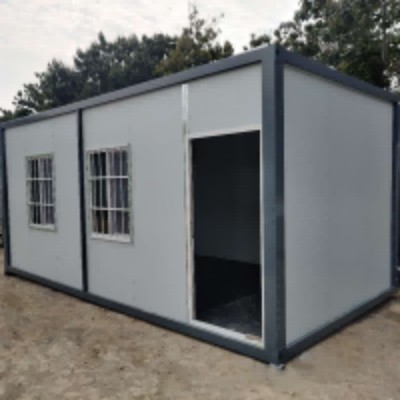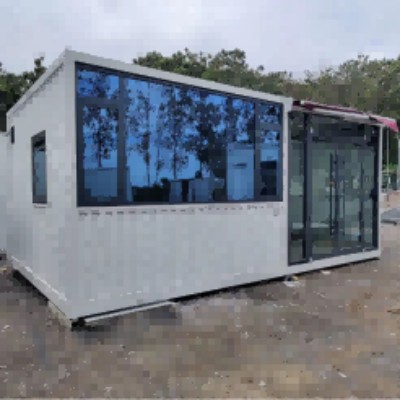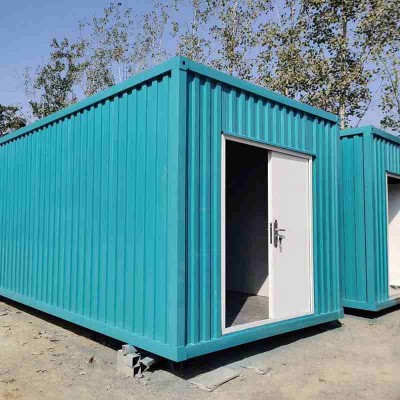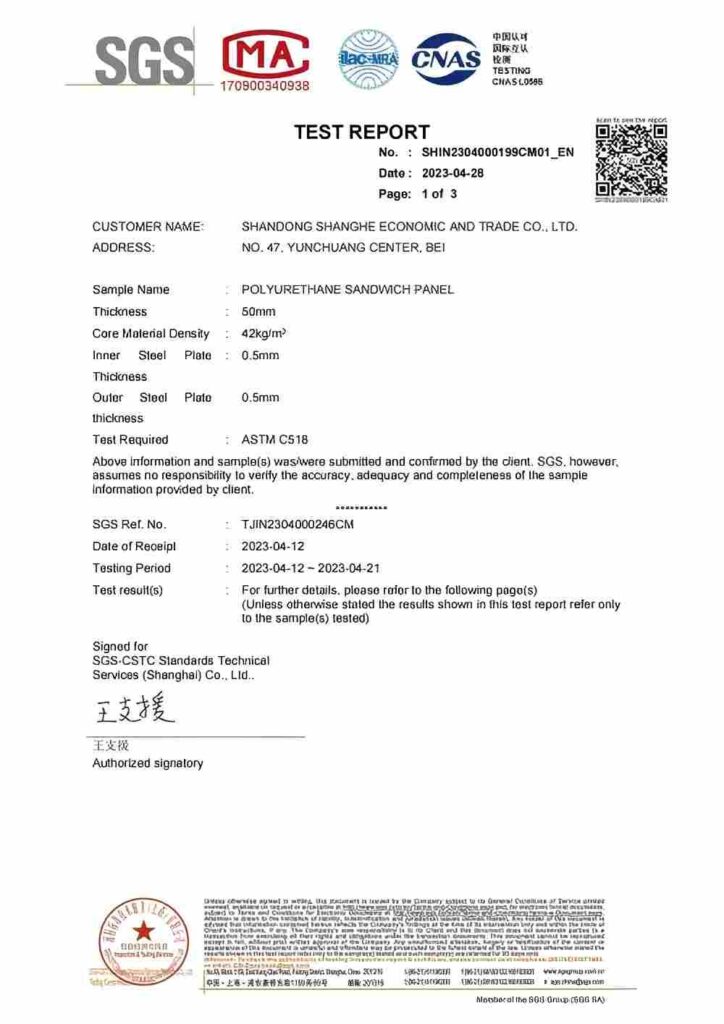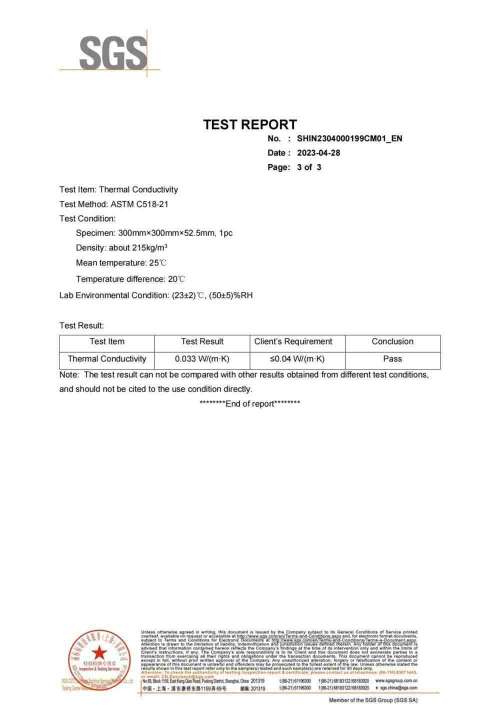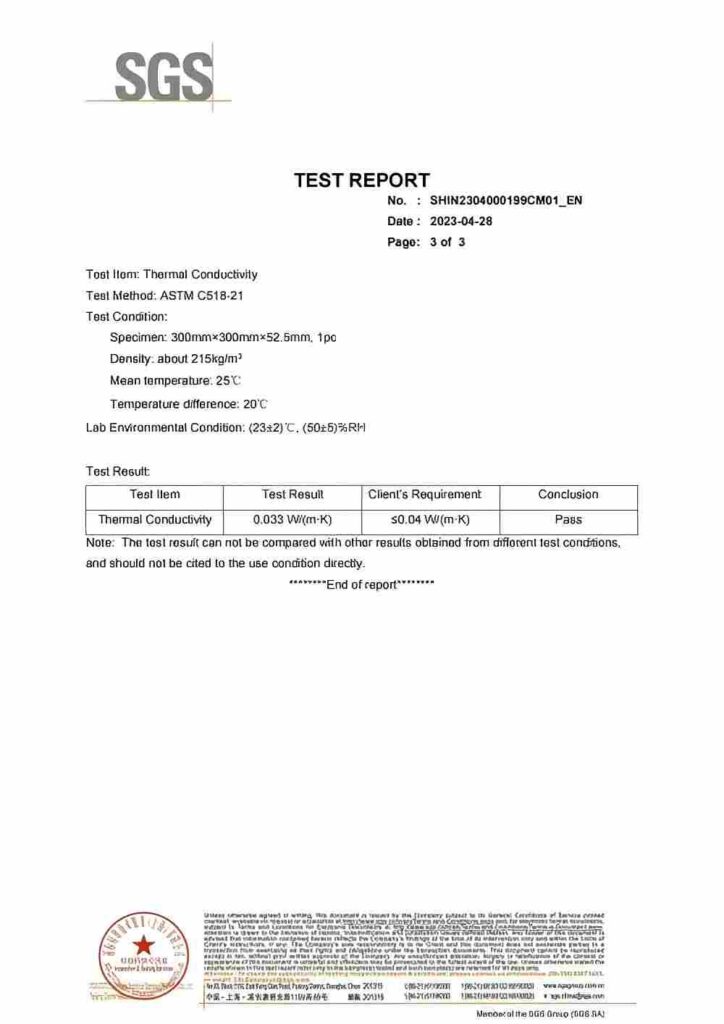What is a tiny house 40 ft container
A tiny house 40 ft container is a compact yet functional living space built from a standard 40-foot shipping container. With dimensions typically around 40 ft long, 8 ft wide, and 8.5 ft high (or 9.5 ft for high-cube models), it offers approximately 320–360 square feet of usable interior space. These structures are engineered for durability, as they are originally designed to withstand harsh shipping conditions. When converted into a home, they are carefully modified to include insulation, weatherproofing, windows, doors, plumbing, electrical systems, and modern interiors.
These homes are a type of shipping container tiny home, also referred to as a modular container home or portable container dwelling, and can be designed as either stationary or mobile units—ideal for those seeking flexible living solutions.
Why 40 ft Container Tiny Homes Are Gaining Popularity
Over the past few years, there has been a significant rise in mobile container tiny houses across many U.S. regions. Homeowners, land developers, and off-grid enthusiasts are drawn to them for several reasons:
- Affordable Housing Alternative – A fraction of traditional home building costs, offering excellent value per square foot.
- Sustainable Living – Repurposes used shipping containers, reducing waste and promoting eco-friendly construction.
- Portability – Can be relocated or transported with relative ease, making them ideal for both permanent and temporary setups.
- Speed of Construction – Many prefab container homes can be delivered and set up in weeks rather than months or years.
- Versatile Locations – From urban backyards to rural plots, zoning flexibility makes them attractive for different lifestyles.
The Local and Regional Trend
In many U.S. states, especially those with rising housing costs, container tiny houses are becoming a practical solution for first-time buyers, retirees, or individuals seeking minimalist living. Their mobility and compact footprint make them perfect for areas where land space is limited or traditional construction is cost-prohibitive. As regulations adapt, 40 ft container houses are finding their way into more neighborhoods, tiny home communities, and off-grid properties.
Benefits of Choosing a 40 ft Container Tiny House
A 40 ft container tiny house offers a smart mix of flexibility, functionality, and long-term value. For buyers in the United States, it’s not just about downsizing—it’s about making a cost-effective, eco-friendly move without sacrificing comfort.
Space Optimization in a Compact Footprint
A standard 40-foot shipping container measures around 320 sq. ft. of usable space. With smart design, it can feel much bigger than it sounds.
- Open floor plans maximize living areas.
- Vertical storage solutions keep clutter out of sight.
- Built-in furniture like fold-out beds or dining tables improves day-to-day usability.
- Multi-use rooms (e.g., living/dining/kitchen combined) adapt to changing needs.
| Specification | Details |
|---|
| External Dimensions | 40’L x 8’W x 8.5’H |
| Approx. Interior Space | ~320 sq. ft. |
| Suitable for | Singles, couples, small families |
| Layout Options | 1BR studio, 1BR + office, open loft style |
Cost Effective Alternative to Traditional Homes
A 40 ft container home can cost far less than building or buying a traditional house. Even with modern finishes, it’s often 40–60% more affordable compared to conventional construction.
- Lower land requirements = reduced purchase cost.
- Shorter construction time reduces labor expenses.
- Lower utility bills with energy-efficient systems.
- Option for financing and modular upgrades later.
Many US buyers find it appealing because you can start small and easily extend the design, unlike fixed traditional builds.
Eco Friendly and Sustainable Construction
Prefab container tiny houses reuse shipping containers, giving them a second life instead of sending them to scrap. This makes them an eco-conscious choice.
- Repurposed materials lower environmental impact.
- Energy-efficient insulation and sustainable building materials reduce your carbon footprint.
- Solar energy options available for off-grid living (see our 40ft expandable container with solar).
Mobility and Versatility in Location
A mobile container tiny house can be placed on permanent foundations or set up as a relocatable dwelling. This flexibility works for both rural retreats and urban accessory dwelling units (ADUs).
- Easy setup in backyards, vacation land, or near water (with permits).
- Relocate or resell without losing the full investment.
- Works in various climates with adjusted insulation and structural reinforcements.
Whether you’re after a portable shipping container home for seasonal living or a permanent full-time residence, the 40 ft model offers a solid balance between living space, cost, and sustainability.
You can explore more container home models in our shop to compare layouts and features.
Design and Construction Details of a 40 ft Container Tiny House
Structural Integrity of 40 ft Containers
A 40-foot shipping container is built from heavy-duty corten steel, designed for industrial shipping loads, making it naturally strong and long-lasting. These containers can handle harsh environments, resist pests, and maintain their frame for decades. When converted into a tiny home, the structure is reinforced where doors, windows, or walls are cut, ensuring the structural strength remains intact. Many U.S. builders also add a steel frame support system for additional stability, especially in regions prone to high winds, earthquakes, or heavy snow loads.
Key Points on Structural Strength:
- Standard dimensions: 40 ft length x 8 ft width x 8.5 ft height (High Cube options add 1 ft of height).
- Built to withstand over 60,000 lbs of cargo weight.
- Resistant to termites, mold, and rot.
Insulation and Weatherproofing for Different Climates
Insulation is crucial for comfort in both summer and winter. In the U.S., spray foam insulation is a popular choice because it seals gaps and adds a moisture barrier. In colder climates, thicker insulation layers and double-pane windows are common. In hotter southern states, builders use reflective roof coatings and cross-ventilation designs to reduce heat build-up.
Climate-Specific Considerations:
- Cold Regions – Closed-cell spray foam + thermal break to prevent condensation.
- Hot Climates – Reflective roofing, UV-resistant exterior coatings, and proper shading.
- Humid Areas – Moisture barriers, vented crawl spaces, and anti-corrosion finishes.
Common Interior Layouts in the U.S. Market
A 40 ft container tiny home offers roughly 320 sq ft of livable space, which can be arranged in multiple ways. U.S. buyers often choose between open-plan studios or one-bedroom layouts. Popular arrangements include:
- Studio Layout – Open floor plan with combined living, kitchen, and sleeping space.
- One-Bedroom Layout – Separate bedroom for extra privacy.
- Two-Container Combo – Expands to over 640 sq ft for families or extra rooms.
Locally Sourced and Sustainable Materials
Whenever possible, builders in the U.S. source materials locally to reduce costs and environmental impact. Commonly used materials include:
- Reclaimed wood for flooring and shelving.
- Energy-efficient windows made by regional manufacturers.
- Recycled metal and low-VOC paints to keep the build eco-friendly.
Benefits of locally sourced materials:
- Supports community businesses.
- Reduces transportation costs and carbon footprint.
- Ensures easier replacement or repair parts in the future.
Customization and Features for 40 ft Container Tiny House
A 40 ft container tiny house can be customized to fit U.S. lifestyles, weather conditions, and local building requirements. From city building codes to extreme climate prep, we design each home to meet your needs without sacrificing quality or comfort.
Adapting to Local Building Codes and Regulations
Every state and city has different rules for container homes. We make sure your shipping container tiny home is built to pass inspections and comply from day one.
Common adaptations include:
- Meeting zoning requirements for permanent or mobile placement.
- Compliance with foundation, utility, and size regulations.
- Using materials and designs that meet fire safety and structural codes.
Energy Efficient Systems for Different Climates
Energy efficiency matters for both comfort and cost savings. Popular upgrades in U.S. container homes include:
- Solar power systems with roof-mounted or ground-mounted panels.
- High-efficiency HVAC systems for year-round heating and cooling.
- LED lighting and low-energy appliances to lower utility bills.
- Insulation upgrades for hot, cold, or mixed climates.
| Feature | Benefit | Options Available |
|---|
| Solar Panels | Lower electric bills | 3kW–8kW systems |
| HVAC System | Comfort in all seasons | Mini-split or central unit |
| Insulation | Energy savings | Spray foam, rigid, or batt |
Specialty Add Ons for Weather Challenges
Depending on where you live in the U.S., your container dwelling might need extra protection. We engineer for your environment.
- Hurricane proofing with reinforced framing, impact-rated windows, and roof tie-down systems for coastal areas.
- Snow load reinforcement for Northern states, with extra roof bracing and heating elements.
- Wildfire resistant siding and non-combustible roofing for high-risk zones.
- Flood elevation systems for areas with water exposure risks.
Why These Features Matter Locally
- In the South: Hurricane straps, storm shutters, strong HVAC.
- In the North: Roof snow guards, thicker insulation, double-pane windows.
- In the West: Fire-resistant materials, solar power, drought-friendly systems.
With the right build plan and upgrades, your 40 foot container house can be just as tough and comfortable as any traditional home—while staying stylish, mobile, and efficient.
Purchase Options and Pricing for a 40 ft Container Tiny House
Average Cost in the US
A 40-foot container tiny house typically costs $45,000–$95,000 in the United States, depending on:
- Level of customization (basic shell vs. fully finished)
- Quality of materials and finishes
- Installed amenities (kitchen, bath, HVAC, solar, smart systems)
- Regional labor and delivery costs
For buyers looking for a turnkey solution, fully furnished models often start around $70,000, while DIY-friendly shells can be significantly less.
| Build Type | Price Range (USD) | Ideal For |
|---|
| Basic Shell | $20,000 – $40,000 | DIY builds, custom interiors |
| Semi-Finished | $45,000 – $65,000 | Mid-budget buyers |
| Fully Finished Turnkey | $70,000 – $95,000+ | Move-in ready option |
Financing Options
Most buyers finance their shipping container tiny home either through:
- Personal loans – Fast approval, flexible use of funds
- RV loans – If the unit is mobile and meets RV standards
- Home equity loans/HELOC – For homeowners using equity as collateral
- Specialized tiny home lenders – Some companies in the US offer container home financing with terms up to 20 years
Delivery Setup Costs by Region
Delivery pricing depends on the distance from the factory and site accessibility:
- Local (Within 100 miles) – $1,000 – $3,000
- Regional (100–500 miles) – $3,000 – $6,000
- Cross-country – $6,000+
If cranes or special site prep are needed, expect additional fees. Rural or remote locations may increase costs.
Warranty and Maintenance Support
Most US suppliers, including Yichen, provide:
- Structural warranty – Commonly up to 10 years on the steel frame
- Component warranties – Appliances, electrical, and plumbing fixtures covered per manufacturer policy
- On-site or virtual support – Assistance with troubleshooting and repairs
- Annual maintenance programs – Inspections and preventative upkeep for long-term performance
Real Customer Experiences and Local Success Stories with 40 ft Container Tiny Houses
Testimonials from US Customers
Our 40 ft container tiny houses have become a favorite choice for homeowners across the United States, from coastal towns to rural communities. Here are a few examples of real feedback we’ve received:
“Perfect for my backyard guest suite” – Sarah M., Florida
“We needed an extra living space that was quick to install and could handle Florida’s heat and storms. The insulation keeps it cool, and we added hurricane-proof windows for peace of mind.”
“A simple downsizing solution” – Tom R., Texas
“I sold my big suburban home and moved into a 40-foot shipping container tiny home. No mortgage, no wasted space, and the quality was better than I expected.”
“Cozy and energy efficient” – Lisa H., Oregon
“I wanted something eco-friendly. The solar setup cuts my electric bill almost to zero, and the open layout makes it feel bigger inside.”
Popular Local Installations
Across the U.S., mobile container tiny houses are customized to fit different climates and lifestyles:
- Coastal Areas – Elevated builds with corrosion-resistant coatings and storm shutters.
- Mountain Regions – Added snow load support, efficient heating systems, and insulated roof panels.
- Rural Communities – Off-grid setups with solar power, rainwater harvesting, and composting toilets.
- Urban Backyards – Designed as ADUs (Accessory Dwelling Units) for rental income or family use.
Photo Gallery of Local Projects
We’ve delivered and installed prefab container tiny houses in different states, each customized to meet local building codes and requirements. Our projects include:
- Modern-style 40 ft container home plans with floor-to-ceiling windows in California.
- Rustic cabin-style container dwellings in the Midwest with wood interior finishes for a warm, homely feel.
- Two-tone painted modular container homes in urban areas for a sleek, contemporary look.
Frequently Asked Questions for 40 ft Container Tiny House Buyers
Permitting and Zoning Requirements for 40 ft Container Tiny Homes
Before you buy a 40 ft container tiny house in the U.S., you need to check your local zoning and building codes. These rules vary from state to state, and even between counties or cities.
Common zoning considerations include:
- Allowed locations – Some areas allow container homes only in specific residential or mixed-use zones.
- Minimum square footage – Certain municipalities have minimum home size requirements that might affect a 40-foot shipping container tiny house.
- Foundation rules – Some areas require permanent foundations, while others let you place the unit as a mobile container tiny house on skids or piers.
Tip: Connect with your local building department before purchasing. They’ll confirm whether you need conditional use permits or variances for placing your container dwelling.
How 40 ft Container Homes Meet Safety Standards
A well-built shipping container tiny home can meet or exceed U.S. housing safety codes if constructed by a reputable builder. At Yichen, our 40 foot container homes are designed to comply with International Residential Code (IRC) and International Building Code (IBC) standards where applicable.
Key safety compliance features include:
- Structural strength – 40 ft shipping containers are made from corten steel, providing outstanding wind and impact resistance.
- Insulation and weatherproofing – Proper insulation for your climate (spray foam, rigid panels, or batt) helps meet energy codes.
- Fire safety – Interior finishes and wiring comply with fire-resistance and electrical standards.
- Load capacity – Roof and frame are reinforced to handle regional snow or wind loads.
Assistance with Local Approval Processes
If you need help navigating approvals, several builders (including us) provide:
- Pre-engineered plans with structural calculations for city review
- Documentation packages with compliance details for building officials
- On-site inspection coordination if your county requires it
For more details about our proven build process and how we meet U.S. housing requirements, you can check our about page for our experience in adapting to local regulations.
Why Yichen is Your Trusted Partner in Container Tiny Houses
Over 20 Years of Proven Experience
Yichen has been building 40 ft container tiny houses and modular container homes for more than two decades. That experience means we understand US housing codes, zoning rules, and climate needs better than most. Whether it’s for a coastal region with hurricane risks, a northern state with heavy snow loads, or a remote desert property, we build to meet real-world living conditions in your area.
Knowledge of Local Market Requirements
Every region has its own rules for shipping container tiny homes—from minimum insulation ratings to foundation options. Yichen’s team works directly with local inspectors and building departments to ensure your home passes code the first time. We’re familiar with:
- State and county permitting for container dwellings
- Energy-efficiency regulations in states like California, Texas, and New York
- Transportation laws for delivering a 40 foot container house to residential or off-grid locations
Focus on Quality and Durability
We design and construct portable shipping container homes that last for decades, not years. Our build standards include:
- Heavy‐duty Corten steel for structural integrity
- Professional‐grade insulation for all climates
- Factory-tested HVAC and electrical systems meeting US safety standards
- Weatherproof sealing to prevent leaks, rust, and heat loss
Customer Satisfaction as a Priority
We don’t just sell prefab container tiny houses—we make sure you’re supported from design to delivery. Our clients value:
- Upfront, clear pricing (no hidden charges)
- A dedicated US-based customer support team
- Warranty coverage for structure and key systems
- Customization options tailored to your lifestyle and budget
When you partner with Yichen, you’re getting more than a 40ft shipping container conversion—you’re getting a reliable, code-compliant, locally adapted home built for the way you live.
How to Get Started with Your tiny house 40 ft container
Step 1 Schedule Your Free Consultation
Getting started on your 40 ft container tiny house is simple. We begin with a free consultation to understand your needs, budget, and style preferences. Whether you want a modern modular container home for a city lot or a fully off‑grid portable shipping container home, we’ll walk you through the options.
During this step, we’ll cover:
- Intended use: Primary home, vacation cabin, office, or rental unit
- Site considerations: Land size, accessibility, local zoning rules
- Layout goals: Bedrooms, kitchen size, storage, open‑plan vs. segmented spaces
- Special features: Solar panels, HVAC systems, extra insulation, hurricane or snow load upgrades
Step 2 Design and Customization
Once we understand your vision, our team will create a customized floor plan based on the 40 ft shipping container dimensions (approx. 320 sq ft of space). We work with local building codes and safety standards to ensure every prefab meets requirements.
Options include:
- Interior finishes: Hardwood, luxury vinyl, eco‑friendly paint
- Appliances: Energy Star kitchen set, washer-dryer combo
- Utilities: Off-grid solar, tankless hot water, advanced HVAC
- Exterior styling: Modern, rustic, industrial looks
If you’re torn between a 40 ft container tiny house vs. traditional tiny house, we can show you side‑by‑side layouts and long‑term cost comparisons.
Step 3 Quote and Agreement
After finalizing your design, we’ll provide a personalized quote detailing:
- Base price of the 40 ft container home
- Optional upgrades and add‑ons
- Delivery and setup fees for your location
- Estimated build and delivery timeline
We also walk you through financing options available in your state, so you can choose the best payment plan.
Step 4 Build and Delivery
Once you give us the green light, we start constructing your custom tiny house from a 40 ft container in our controlled facility. This ensures precision, quality, and faster delivery.
On delivery day, our crew handles setup, connections, and walkthroughs so everything is ready to go.
Step 5 Ongoing Support
We provide warranty coverage and maintenance support in your region, so if you ever need repairs, upgrades, or even relocation help for your container home, we’ve got you covered.
Ready to start your container home journey?
Contact our team today for your free consultation and personalized quote on building your own 40 foot container tiny house.

